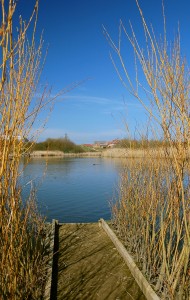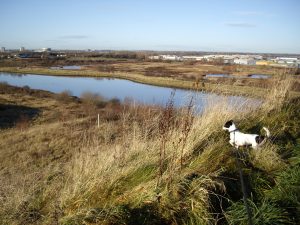National context
Water is a precious resource that faces increasingly severe and often conflicting pressures. Clean, thriving water bodies are an integral part of the natural environment and the economy. Rivers, streams, lakes and ponds are an important part of our landscape. They support a wealth of wildlife and are vital for industry, recreation, and tourism as well as providing our basic needs. The quality of UK waters has improved dramatically over the past four decades but , with increasing pressure on water abstraction and increasing incidents of flooding, managing water resources has become an important issue for wildlife and the economy.
The European Water Framework Directive became part of UK law in 2003. It gives a framework to plan and deliver a better water environment, focussing on ecology. It introduces a holistic approach to the management of water quality, and establishes a system for the protection and improvement of all aspects of the water environment. The Directive requires all inland and coastal waters to reach at least “good status” by 2015. Achieving this ambitious target will require management planning at river basin level, linking with other key policy areas such as agriculture, land use, biodiversity, tourism, recreation and flood protection.
Flooding from rivers and coastal waters is a natural process that plays an important role in shaping the natural environment. However, as seen during the summers of 2007 and 2009, flooding can threaten life and cause substantial damage to property. The effects of weather events can be increased in severity both as a consequence of decisions about the location, design and nature of development and land use, and as a potential consequence of future climate change. Although flooding cannot be controlled entirely, its impacts can be avoided and reduced through good planning and management. The Flood and Water Management Act 2010 establishes primary flood risk management policy for England and Wales. The Act lists “maintaining or restoring natural processes” as a way of managing flood risk, and permits the designation of natural features that can reduce this risk. Natural flood management, defined as the alteration, restoration or use of landscape features, is being promoted as a way of reducing flood risk. It can reduce erosion and benefit water quality, carbon storage & biodiversity. These positive effects may sometimes be more valuable than the reduction in flood risk.
In the Tees Valley
The River Leven – a practical example of river restoration – The Tees Rivers Trust is implementing a project to reduce sediment and tackle invasive species in the Tees/River Leven sub-catchment. The River Leven is the first major tributary of the Tees encountered by migratory fish such as Atlantic salmon, sea trout and sea lamprey. These, as well as non migratory species such as brown trout and bullhead, require clean well oxygenated water with sufficient clean substrate to provide both a spawning habitat as well as a readily available supply of invertebrate life to sustain emerging salmonid fry and lamprey ammoecetes. Much of the river substrate is smothered by fine sediment and many areas of have become accreted making it unusable for invertebrates and fish alike.
Agriculture and development throughout the catchment has reduced the remaining riparian habitat and many fields are built on, cultivated or grazed up to the water’s edge. This has created pathways for sediment and nutrients to enter the river overland in increasing amounts whilst field drains transport entrained sediment beneath the surface directly to the watercourse. Widening of the watercourse for drainage and by cattle grazing has in many places slowed the river flow down sufficiently for sediment to drop from the water column and smother the substrate.
Invasive plant species, such as Himalayan balsam and giant hogweed, are colonising increasing areas of the Leven catchment. These species are out-competing native flora and their associated fauna and creating large monocultures. When these shallow-rooted species die back in winter they leave large areas of riparian zone bare and prone to erosion in high winter flows. This action increases the volume of sediment entering the river.
The Trust is working with farms providing advice on small changes in management practices and help with low cost capital measures aimed at decreasing sediment loss from farms whilst also improving profitability of the farm business. They are also working closely with the North Yorks National Parks Apprentices to carry out practical instream habitat improvements and the Environment Agency’s ‘Slow the Flow’ project aimed at reducing flooding by allowing brief inundation of low-lying areas in order to take the peak off flood levels.




